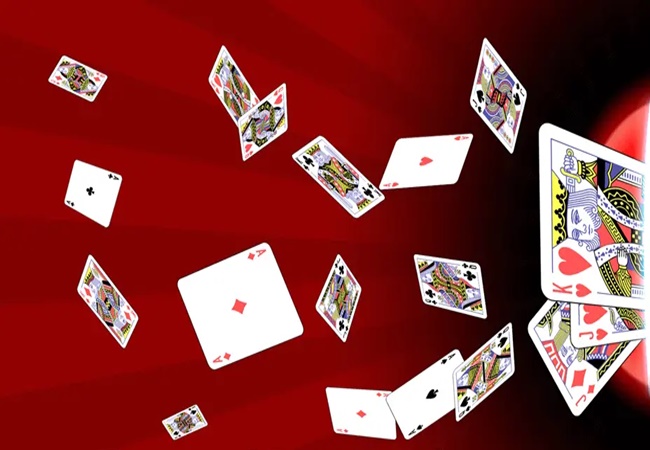The History of Rummy: From Origins to Modern Play
Rummy, a popular card game renowned for its blend of strategy and chance, boasts a rich history that spans centuries, making it a fascinating subject for rummy exploration. Its evolution from simple card games to the intricate versions played today reflects both its adaptability and enduring appeal. This exploration of Rummy’s history will trace its origins, development, and modern adaptations, shedding light on how the Rummy game has become a staple in card game culture.

Origins of Rummy Exploration
The origins of Rummy exploration are somewhat murky, with various theories suggesting different starting points for the game. Many historians believe that Rummy has its roots in the early card games of China and Europe, similar to the rise of Teen Patti Stars in card gaming culture. One popular theory posits that Rummy evolved from a Chinese game called “Koi-Koi,” which was played with a deck of special cards known as Hanafuda. This game, with its emphasis on matching and melding, shares many similarities with modern Rummy.
Another theory suggests that Rummy exploration descended from the Mexican game “Conquian,” which dates back to the 19th century. Conquian is often cited as a direct ancestor of Rummy due to its use of melds and sets, key elements of the Rummy gameplay. The game’s migration from Mexico to the United States, where it gained popularity, set the stage for Rummy’s evolution into the game we recognize today.
Development and Popularization
In the early 20th century, Rummy exploration began to gain traction in the United States, driven by its straightforward rules and engaging gameplay. The game was first popularized under the name “Rummy,” derived from the term “Rum,” which referred to a mixture of various elements. It quickly became a favorite pastime, played in homes and social gatherings across the country.
During this period, Rummy underwent several transformations, leading to the development of different variants. One of the most notable adaptations was Gin Rummy, introduced in 1909 by Elwood T. Baker and his brother. Gin Rummy simplified some of the rules of traditional Rummy, making it more accessible and faster-paced. This version of the game became immensely popular, particularly in the United States, and is still widely played today, often accompanied by strategies for beginners to enhance gameplay.
International Variants
As Rummy exploration spread across the globe, it adapted to local preferences and cultures, resulting in a variety of international versions. For example, in India, a game known as Indian Rummy or Paplu emerged. Indian Rummy is typically played with two decks of cards and is characterized by its emphasis on forming sets and sequences. The game’s popularity in India is so significant that it has become a national pastime, with numerous tournaments and competitions held regularly.
In Europe, particularly in countries like Spain and Italy, Rummy has also taken on unique features in its various forms. In Spain, the game “Rummikub” is played with numbered tiles rather than traditional cards, adding a new dimension to the gameplay. Similarly, in Italy, the game “Scopone” shares similarities with Rummy, incorporating elements of strategy and teamwork.

Modern Play and Technological Advancements
The advent of technology has significantly influenced the way Rummy exploration is played and enjoyed. Online platforms and mobile apps have made the game more accessible than ever, allowing players to engage in matches with opponents from around the world. These digital versions often incorporate variations of Rummy, such as Kalooki and 500 Rummy, catering to a wide range of player preferences.
Online Rummy platforms have also introduced new features, such as leaderboards, tournaments, and real-time multiplayer options, enhancing the competitive aspect of the game. This technological integration has revitalized interest in Rummy, attracting both new players and long-time enthusiasts.
Cultural Impact and Legacy
Rummy’s impact extends beyond its gameplay; it has become a cultural phenomenon in various regions. In the United States, the game has appeared in numerous films, TV shows, and literature, symbolizing leisure and social interaction. Its presence in popular culture underscores its significance as more than just a game but as a shared experience.
In India, Rummy’s cultural relevance is even more pronounced. The game is deeply embedded in social traditions and is often associated with celebrations and family gatherings. The widespread participation in Rummy tournaments and the game’s inclusion in festivals highlight its role in Indian society.
Conclusion
The history of Rummy exploration is a testament to its enduring appeal and versatility. From its origins in ancient China and Mexico to its modern-day adaptations, Rummy has evolved while retaining its core elements of strategy and chance. Its various forms and international versions reflect its ability to adapt to different cultures and preferences. As Rummy continues to thrive in both traditional and digital formats, it remains a beloved popular card game that bridges generations and geographies, a true classic in the world of games.








